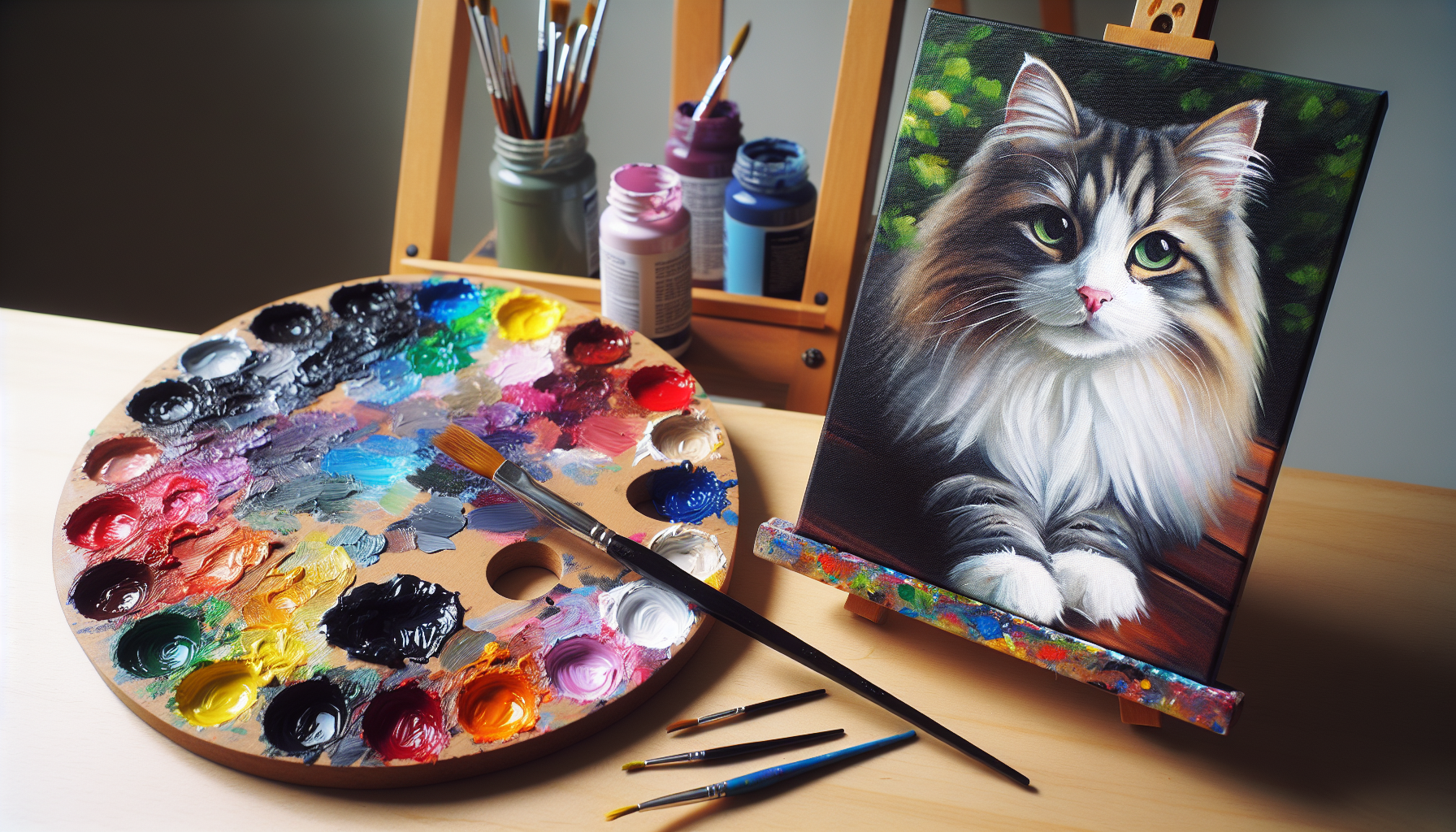Soft body acrylic paint is a versatile and popular medium used by artists worldwide. This type of paint has a smooth and creamy consistency, which allows for easy blending and layering on various surfaces such as canvas, paper, and wood. With its rich pigments and quick-drying properties, soft body acrylic paint offers artists the freedom to create stunning and vibrant artworks. Whether you’re a beginner or an experienced artist, exploring the possibilities of soft body acrylic paint can open up a whole new world of creativity and expression.
What Is Soft Body Acrylic Paint
Soft body acrylic paint refers to a type of acrylic paint that has a relatively thin consistency, making it easier to spread and mix. Unlike heavy body or thick acrylic paints, which have a more buttery texture, soft body acrylic paints have a smooth and fluid consistency. This makes them a popular choice among artists who prefer to work with a more liquid-like paint, allowing for easy blending and layering of colors.
Definition of Soft Body Acrylic Paint
Soft body acrylic paint is a form of acrylic paint that has a smooth and fluid consistency, falling somewhere between heavy body and fluid acrylic paints. It is commonly used in various art techniques, including painting on canvas, paper, wood, and other surfaces. The term “soft body” refers to the paint’s ease of application, as it glides smoothly onto the chosen surface.
Characteristics of Soft Body Acrylic Paint
Soft body acrylic paint possesses several distinct characteristics that make it a desirable choice for many artists. One of its primary features is its ability to retain vibrant colors. Soft body acrylic paints are known for their high pigment load, which allows them to maintain their intensity even when diluted. This ensures that your artwork will have long-lasting and rich colors.
Additionally, soft body acrylic paint has excellent blending properties. Due to its thin consistency, it is easy to mix colors together, creating smooth transitions and gradients on your canvas. This makes it an ideal choice for artists who enjoy creating intricate layers and fine details in their work.
Another characteristic of soft body acrylic paint is its quick drying time. Compared to other types of paints, such as oil or watercolor, acrylic paint dries relatively fast. This allows artists to build up layers and continue working without waiting for extended periods for the paint to dry. The quick drying time also makes it easier to correct or make adjustments to your artwork, as layers can be painted over without smudging or blending with the underlying layers.

History of Soft Body Acrylic Paint
Soft body acrylic paint emerged as a popular choice among artists in the mid-20th century. Acrylic paints themselves were first developed in the 1940s, but it wasn’t until the 1960s that soft body acrylic paint was introduced to the market. This innovation provided artists with a new medium that allowed for greater flexibility and control in their artistic expressions.
Since its introduction, soft body acrylic paint has gained popularity and has become a staple in many artists’ studios. Its versatility and ease of use have made it a preferred choice for both professional artists and beginners alike.
Composition of Soft Body Acrylic Paint
Soft body acrylic paint is primarily composed of pigments, binders, additives, and water. Pigments are the colorants that give the paint its hue, and they are commonly made from natural or synthetic materials. Binders, usually in the form of acrylic polymer emulsion, are responsible for holding the pigments together and adhering them to the surface. Additives are included to improve the paint’s shelf life, flow, and other desired properties. Lastly, water is used as a diluent to achieve the desired consistency.
The composition of soft body acrylic paint allows it to maintain its vibrancy, adhere well to various surfaces, and remain flexible once dried. The combination of these components ensures that the paint is durable and long-lasting.

Variety of Colors
Soft body acrylic paint is available in a wide range of colors, providing artists with numerous options for their artistic endeavors. From bold primary colors to subtle pastels and metallic shades, there is a spectrum of colors to suit every preference and project. Many brands offer sets or individual tubes of soft body acrylic paint, allowing artists to choose from a delightful array of hues and shades.
The extensive variety of colors available in soft body acrylic paint enables artists to explore their creativity and experiment with different color combinations. Whether you are trying to capture the vibrant colors of a sunset or create a monochromatic abstract piece, the versatility of soft body acrylic paint ensures that you have the palette you need to bring your ideas to life.
Texture and Consistency
As mentioned earlier, soft body acrylic paint has a relatively thin consistency compared to heavy body acrylics. This makes it easy to apply and manipulate on different surfaces. The texture of soft body acrylic paint is smooth and silky, allowing for seamless brushstrokes and effortless blending. Whether you prefer a more pronounced texture or a completely smooth finish, soft body acrylic paint can be applied to achieve your desired result.
The smooth consistency of soft body acrylic paint makes it suitable for a variety of techniques, such as glazing, layering, and pouring. It can also be thinned down with water or mediums, further enhancing its versatility and allowing artists to create transparent washes or build up opaque layers.

Opacity and Translucency
Soft body acrylic paint exhibits a range of opacity levels, varying from transparent to semi-opaque and opaque. This allows artists to choose the level of transparency they desire in their artwork. Transparent soft body acrylics are ideal for layering and creating depth, while opaque colors can be used to cover large areas or provide a solid base for further detailing.
The ability to control opacity is particularly beneficial in achieving different effects and adding dimension to your artwork. Whether you want to create a dreamy, ethereal scene or a bold and vibrant composition, soft body acrylic paint’s opacity and translucency options enable you to achieve the desired outcome.
Drying Time
One of the advantages of soft body acrylic paint is its relatively fast drying time. Unlike oil paints that can take days or even weeks to dry, soft body acrylic paint typically dries within 10 to 20 minutes, depending on various factors such as humidity and thickness of application. The quick drying time allows artists to work efficiently, building up layers and making adjustments without waiting for extended periods.
With a shorter drying time, artists can be spontaneous and experiment with different techniques and effects. It also enables them to complete artwork faster, making soft body acrylic paint a practical choice for those who prefer a more time-efficient artistic process.

Applications of Soft Body Acrylic Paint
Soft body acrylic paint can be used in a wide range of artistic applications. It is commonly used by painters on canvas, but it is also suitable for surfaces such as paper, wood, fabric, and even metal. Its versatility allows artists to explore various techniques, from traditional painting styles to contemporary mixed media approaches.
Soft body acrylic paint is often favored by artists who enjoy creating detailed works or working in layers. Its smooth consistency makes it ideal for intricate brushwork, fine lines, and intricate details. Additionally, the ability to build up layers without waiting for extended drying times allows artists to add depth and dimension to their artwork.
The durability of soft body acrylic paint also makes it suitable for outdoor art projects and mural paintings. Its resistance to UV light and the elements ensures that your artwork will last over time and maintain its vibrant colors.
Comparisons with Other Acrylic Paints
When comparing soft body acrylic paint to other types of acrylic paints, such as heavy body and fluid acrylics, there are noticeable differences in texture, consistency, and application. Heavy body acrylic paints have a thicker and more buttery consistency, making them ideal for impasto techniques and creating texture on the canvas. On the other hand, fluid acrylics have a much thinner consistency, similar to soft body acrylics, but often with a higher pigment load.
Soft body acrylic paint falls in between heavy body and fluid acrylics, offering artists a versatile middle ground. It combines the fluidity of fluid acrylics with the higher pigment load and greater control over application that heavy body acrylics provide. This allows artists to have the best of both worlds, as soft body acrylic paint allows for smooth blending and layering while maintaining vibrant colors and offering control over paint application.

Tips for Using Soft Body Acrylic Paints
To make the most of your soft body acrylic paint, here are a few tips to consider:
-
Experiment with different techniques: Soft body acrylic paint lends itself well to a variety of techniques, so don’t be afraid to experiment. Try out glazing, dry brushing, or pouring to explore different effects.
-
Use a palette with a lid or spray bottle: Soft body acrylic paint tends to dry quickly, so it’s essential to keep your paint wet on the palette. Use a palette with a lid or mist water on the paint surface to prevent it from drying out too fast.
-
Mix colors on a separate palette: Since soft body acrylic paint blends easily, it’s a good idea to mix your colors on a separate palette to maintain the purity of your original paint colors.
-
Thin with mediums: If you want to create washes or transparent layers, consider thinning down your soft body acrylic paint with water or acrylic mediums.
-
Clean your brushes promptly: Soft body acrylic paint can dry quickly on brushes, so it’s important to clean them promptly after use. Rinse your brushes thoroughly with water or use a brush cleaner to remove any paint residue.
By following these tips, you can enhance your experience with soft body acrylic paint and unlock its full potential in your artwork.
In conclusion, soft body acrylic paint offers artists a versatile and user-friendly medium for their artistic creations. With its smooth consistency, vibrant colors, and quick drying time, soft body acrylic paint allows for easy blending, layering, and detailed brushwork. Whether you are a beginner or an experienced artist, soft body acrylic paint provides you with a tool to explore your creativity and bring your artistic visions to life.



